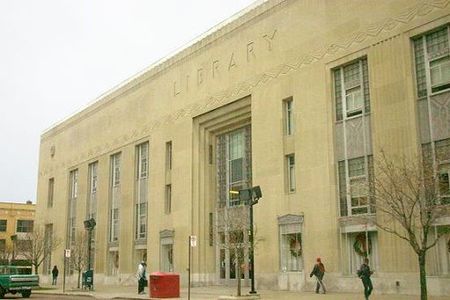Toledo-Lucas County Public Library
1838 establishments in OhioBuildings and structures in Toledo, OhioEducation in Toledo, OhioLibraries established in 1838Public Works Administration in Ohio ... and 5 more
Public libraries in OhioTourist attractions in Toledo, OhioUse American English from December 2017Use mdy dates from December 2017Works Progress Administration in Toledo, Ohio

Toledo Lucas County Public Library is a public library system located in Toledo, Ohio.
Excerpt from the Wikipedia article Toledo-Lucas County Public Library (License: CC BY-SA 3.0, Authors, Images).Toledo-Lucas County Public Library
North Michigan Street, Toledo
Geographical coordinates (GPS) Address External links Nearby Places Show on map
Geographical coordinates (GPS)
| Latitude | Longitude |
|---|---|
| N 41.654444 ° | E -83.539722 ° |
Address
Toledo-Lucas County Public Library (Main Branch)
North Michigan Street 325
43624 Toledo
Ohio, United States
Open on Google Maps










